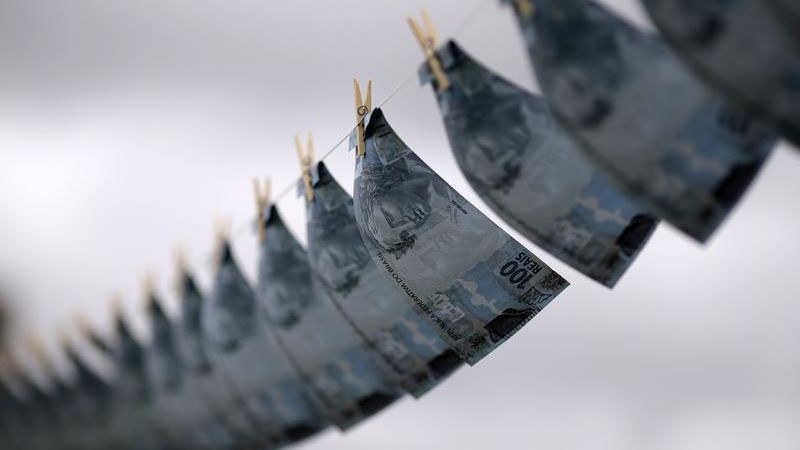The Australian police's recent covert operation revealed a lot about how transnational organized crime syndicates operate their money laundering activities
The Australian Federal Police’s (AFP) landmark AN0M intercepts have given the agency a fresh set of insights into the money laundering activities of some of the world’s largest organized crime syndicates.
Operation Ironside saw Australian and US police working covertly to seed 12,000 encrypted mobile phones into the criminal underworld. The devices, known as AN0M, were sold in more than 100 countries. The three-year investigation eventually expanded to include 9,000 law enforcement officers from 17 countries. The authorities secured a treasure trove of data, including 27 million messages from more than 300 organized crime groups.
One year after the police swooped in with globally coordinated arrests, they are still working “boots and all” on the prosecutions, according to AFP officials. They are also continuing to sift through millions of messages that criminals believed were locked away under layers of military-grade encryption.
The AN0M intercepts had given police an unprecedented insight into the techniques that serious transnational organized crime syndicates use to wash their illicit funds, said Russel Smith, a detective superintendent who heads up the AFP’s money laundering team. “We’ve had some significant insights through the AN0M job,” Smith said. “We talk about crypto and other topologies, but in AN0M, we seized more than A$50 million in cash in that one job. Significant amounts of cash were seized offshore.”
Using professional enablers
Operation Ironside showed that “cash is still huge” in the world of organized crime, Smith explained, adding that the operation also provided some fresh insights into the capacity that transnational organized crime groups have to launder their own funds, through the use of professional enablers.
“One thing that AN0M did identify was the use of a number of professions to assist them with the illicit activity that was happening at the time,” he said. “It really underlined the fact that the professional enablers in Australia actively support transnational organized crime groups in laundering their funds.”
Traditional organized crime groups still rely on professional money-laundering organizations, but they have “well-developed self-laundering techniques” as well. This has challenged the long-held belief that criminal groups are more inclined to separate the crime from the offense as quickly as possible by handing the funds to money-laundering organizations.
“They will go through professional enablers, to layer cash, to obfuscate beneficial ownership and purchase real estate and assets,” Smith said.
Attractive asset classes
Real estate is still the most attractive asset class to money launderers in Australia. In the AN0M case, the AFP seized properties in New South Wales and Queensland as well as vehicles, bullion, and jewelry. They also traced Australian cash to offshore jurisdictions, which has been restrained. Police are working with their overseas counterparts to have the money returned to Australia. “There are a number of things that came out of AN0M that were very interesting for us and opened our eyes, in terms of how transnational organized crime syndicates will work together,” Smith noted. “Previously, we would have thought they were a little bit more compartmentalized, but that’s certainly not the case. They’ll work together to move their money in a number of ways.”
The AN0M intercepts have helped the AFP to restrain more than A$600 million in criminal assets in just three years. This was two years earlier than the ambitious target set by Reece Kershaw, the commissioner of the AFP, in February 2020. In that time, the AFP-led Criminal Assets Confiscation Taskforce (CACT) has restrained A$380 million in residential and commercial properties, A$200 million in cash and bank accounts, and A$35 million in cars, boats, aircraft, cryptocurrency, artwork, bullion, jewelry, and other luxury items.
The seizures also provide an unprecedented insight into the volume of criminal money that is being laundered through property purchases. In one job in August, the CACT restrained three properties in New South Wales, 47 vehicles — including 31 classic cars — and about A$676,000 in gold and silver bullion. Kershaw has made criminal assets confiscation a priority for the AFP with the establishment of the Criminal Assets Confiscation Command, which reports directly to him.
Pursuing the proceeds of crime is a central pillar in the AFP’s efforts to disrupt organized crime, said Ian McCartney, the AFP’s deputy commissioner for investigations. “The criminal environment today is highly complex and requires an agile and far-reaching response from law enforcement,” McCartney said. “This strategy, which is delivering a maximum impact on the criminal environment, is despised by organized crime.”
The CACT brings together police officers, litigators, financial investigators, forensic accountants, and partner agency specialists, including the Australian Transaction Reports and Analysis Centre. The federal proceeds of crime laws allow the CACT to restrain both proceeds and instruments of crime (based on a civil standard of proof), as well as to obtain financial penalty and unexplained wealth orders, regardless of whether there is a related criminal prosecution or investigation.
The AFP and its partners have managed to restrain more than A$200 million from offshore locations in the past decade, said Stefan Jerga, the AFP’s national manager, criminal assets confiscation. “The CACT will continue to hit [criminals] where it hurts most: their wallets, their lavish lifestyles, and their profits,” Jerga said.







